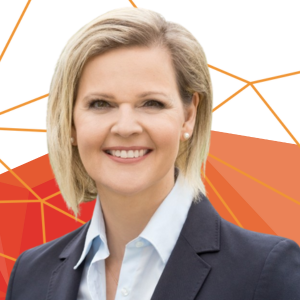Building Agri-Food Trade Security and Resilient Supply Chains in Asia-Pacific: Industry Leaders Share Their Vision
From climate shocks and inflationary pressures to geopolitical and demographic shifts, the Asia-Pacific agri-food sector is facing a period of profound change. With supply chain disruptions becoming more prevalent, the sector is presented with a unique opportunity: to build stronger, more resilient agri-food systems that deliver both economic and social value for the region.
Leaders across the agri-food landscape – from corporates and innovators to investors – agree that resilience today encompasses the dual pressures of addressing short-term disruptions while preparing for longer-term structural changes. It requires bold collaboration, innovative financing models, and a willingness to rethink traditional trade dynamics.
In the lead-up to the Asia-Pacific Agri-Food Innovation Summit, we spoke with senior leaders at BASF, Bits x Bites, Olam Agri, FrieslandCampina, Mondelēz International, Novo Holdings, Yara International, and Olam Food Ingredients (ofi) to explore how industry can navigate near-term risks while creating long-term value. Their insights highlight the critical role of strategic partnerships, blended finance, and systemic innovation in shaping the future of trade and supply chains across the region.

Resilience, Growth, and the Future of Agri-Food in Asia-Pacific
Amidst uncertainty and volatility, industry leaders see a compelling opportunity to redesign agri-food supply chains for greater resilience, agility, and long-term growth.
 For Corine Tap, President, Asia at FrieslandCampina, the key lies in building inclusive, agile systems that strengthen both trade and food security. She believes industry must invest in sustainable sourcing, blended finance, and stronger public-private partnerships (PPPs) to navigate risks and unlock growth.
For Corine Tap, President, Asia at FrieslandCampina, the key lies in building inclusive, agile systems that strengthen both trade and food security. She believes industry must invest in sustainable sourcing, blended finance, and stronger public-private partnerships (PPPs) to navigate risks and unlock growth.
As she puts it, “resilience and growth go hand in hand” when businesses ensure families have access to safe, affordable, and trusted nutrition. FrieslandCampina demonstrates this by combining science-backed dairy initiatives – such as school milk programmes informed by the South East Asian Nutrition Surveys (SEANUTS II) – with efforts to improve regional trade flows and local production.
Kamesh Ellajosyula, President and Chief Innovation and Quality Officer at Olam Food Ingredients (ofi), shares this focus on reshaping supply chains to meet future demands. He sees the integration of sustainable sourcing, innovation, and impact as central to strengthening both competitiveness and resilience.
Ellajosyula argues that this transformation is about “adding value by helping customers manage volatility, accelerate innovation, and meet sustainability targets” – all while contributing to long-term food security. With a sourcing network of around 2.8 million farmers and an agile supply chain, ofi positions itself to deliver high-quality, traceable ingredients even in challenging markets.
Both leaders reflect a wider industry recognition that resilience and competitiveness are interdependent drivers of future agri-food success in Asia-Pacific.
Regional Collaboration, Turning Neighbours into Strategic Partners
As trade relationships shift and supply chain risks become more complex, regional collaboration has moved to the forefront of agri-food strategy in Asia-Pacific. Leaders across the sector agree that building resilience now depends on trusted partnerships that extend beyond transactional trade – embracing shared data, harmonised standards, and collaborative innovation.
 Deepa Hingorani, Partner, Head of Planetary Health, Asia at Novo Holdings, affirms this shift toward greater regionalism: “Strengthening regional collaboration is vital to building more resilient, secure, and sustainable agri-food systems across Asia-Pacific. An ‘Asia for Asia’ approach, where countries work together to localise sustainable production across the value chain, can significantly enhance efficiency and resilience.”
Deepa Hingorani, Partner, Head of Planetary Health, Asia at Novo Holdings, affirms this shift toward greater regionalism: “Strengthening regional collaboration is vital to building more resilient, secure, and sustainable agri-food systems across Asia-Pacific. An ‘Asia for Asia’ approach, where countries work together to localise sustainable production across the value chain, can significantly enhance efficiency and resilience.”
Hingorani notes that partnerships with regional corporates, family offices, and sovereign-aligned institutions are emerging as a powerful means to scale science-based solutions that reflect local contexts and accelerate shared growth.
Corine Tap of FrieslandCampina emphasises that regional collaboration is “not just valuable – it is vital” in a region where interconnected challenges such as climate risk, urbanisation, and food demand converge.
FrieslandCampina works actively with governments, suppliers, NGOs, and local communities. In Thailand and Malaysia, the company supports carton recovery schemes alongside school-based nutrition education – initiatives that build both environmental responsibility and community health. In Indonesia, it's long-term partnerships with local dairy cooperatives that help ensure stable supply while directly supporting farmer livelihoods.
 Marisa Soares, SVP Innovation & Impact at Yara International, highlights the need to strengthen Asia-Pacific’s fragmented innovation ecosystems. She believes cross-border collaboration will be “the future of agri-food innovation and beyond”, helping to unlock market access and investment. ASEAN’s efforts to standardise regulations and integrate markets are seen as important steps, though Soares calls for broader and deeper cooperation.
Marisa Soares, SVP Innovation & Impact at Yara International, highlights the need to strengthen Asia-Pacific’s fragmented innovation ecosystems. She believes cross-border collaboration will be “the future of agri-food innovation and beyond”, helping to unlock market access and investment. ASEAN’s efforts to standardise regulations and integrate markets are seen as important steps, though Soares calls for broader and deeper cooperation.
BASF’s science-driven partnerships are another example of collaboration in action. “Together, we are shaping a more resilient, productive, and profitable future for agriculture,” says Simone Barg, Senior VP, Agricultural Solutions Asia Pacific at BASF.
"In the Philippines, BASF partners with the International Rice Research Institute (IRRI) to explore ways of reducing the carbon footprint of rice production – a critical issue for the region’s food security. In Japan, its partnership with NEWGREEN focuses on carbon farming opportunities for rice growers, while in China, BASF collaborates with Yuntianhua to verify emission reductions through stabilised urea fertiliser, supporting climate-smart farming at scale."
Similarly, ofi champions collaborative models that combine commercial scale with social impact. In Indonesia, its $8.2 million LASCARCOCO partnership – a joint initiative with public and private partners – has provided climate-smart agroforestry training to over 2,500 cocoa and coffee farmers. Its Coffee LENS strategy expanded this collaborative approach in 2023, working with 45 partners, including customers, NGOs, and donors, to advance sustainability across global coffee supply chains.
These examples show that resilient agri-food supply chains in Asia-Pacific depend on partnerships that build trust, foster innovation, and share value across sectors and borders – turning neighbours into true strategic partners.
Unlocking Investment with Blended Finance
Access to capital remains a critical barrier to catalysing and scaling tools and programmes focused on building resilient agri-food supply chains in Asia-Pacific, particularly in underserved or higher-risk markets. Blended finance – combining concessional capital from governments, development finance institutions (DFIs), or donors with private investment – is emerging as a key mechanism for de-risking projects and unlocking sustainable growth.
 Matilda Ho, Founder and Managing Director at Bits x Bites, recognises that “commercialising technology within the complex agri-food value chain often requires significantly more time than in other sectors. Patient capital is essential, but we also need to embrace diversified financing mechanisms to foster sustained innovation and manage risks effectively.”
Matilda Ho, Founder and Managing Director at Bits x Bites, recognises that “commercialising technology within the complex agri-food value chain often requires significantly more time than in other sectors. Patient capital is essential, but we also need to embrace diversified financing mechanisms to foster sustained innovation and manage risks effectively.”
She illustrates a compelling example from China’s booming agri-food innovation space, “Shanghai’s 100 billion RMB government guidance fund launched in 2024. This fund attracts private capital to drive advancements in AI and biotech across promising sectors, including agriculture and food technology. Initiatives like this demonstrate how strategic funding can catalyse transformative agrifood innovations, bridging the gap between R&D and real-world impact.”
For Corine Tap of FrieslandCampina, blended finance is a powerful enabler for scaling nutrition and sustainability initiatives in the region. She believes success depends on moving beyond small pilot projects to implement large-scale programmes that deliver both social impact and business returns. As she explains, “now is the time for bold collaborations – not just intention, but action.”
One example is FrieslandCampina’s subsidiary in Indonesia, Frisian Flag, which has partnered with the Netherlands-based SNV Development Organisation and Invest International on a €1 million Climate Smart Demo Farm initiative. This public-private partnership aims to improve milk quality, increase yields, and build climate-resilient farms – all while directly empowering local smallholder dairy farmers.
Kamesh Ellajosyula, of ofi, highlights blended finance as a vital tool to address the estimated US$260 billion annual financing gap needed to transform global agri-food systems by 2030. By pooling public, philanthropic, and private funds, blended finance can help make uncommercial projects investable.
ofi’s collaboration with Nestlé exemplifies this approach. Their 15-year Global Agroforestry Partnership is supporting 25,000 farmers across Nigeria, Brazil, and Côte d’Ivoire to transition 72,000 hectares to regenerative agriculture – improving livelihoods while restoring degraded land and reducing emissions. Although this programme operates beyond Asia-Pacific, it demonstrates the type of long-term, multi-stakeholder collaboration that could be replicated within the region.
All three leaders agree that blended finance has the potential to bridge the investment gap – but only if partners align commercial goals with social and environmental outcomes and design sustainable long-term strategies from the outset.
Innovation at the Heart of Future-Proofing
Alongside efforts to build stronger regional networks and PPPs based on blended finance approaches, R&D plays an important role in driving agri-food supply chain innovation. Leaders point to a convergence of digital technologies, financial tools, and supportive policy frameworks as critical levers for resilience.
 Julie Greene, CSO at Olam Agri, emphasises that innovation must be practical, farmer-centric, and climate-smart to meaningfully improve food security in the region. “Asia is home to over half of the world’s food-insecure population, and smallholder farmers, especially in rice production, face mounting challenges from climate volatility to post-harvest losses.”
Julie Greene, CSO at Olam Agri, emphasises that innovation must be practical, farmer-centric, and climate-smart to meaningfully improve food security in the region. “Asia is home to over half of the world’s food-insecure population, and smallholder farmers, especially in rice production, face mounting challenges from climate volatility to post-harvest losses.”
Greene advocates for innovative practices such as alternate wetting and drying and laser land levelling to improve yields, reduce emissions, and enhance harvest efficiency. She adds, “Investment in tools, training, and technologies for post-harvest processes is equally essential if we are to meaningfully reduce losses and build resilience from the ground up.”
For Tap, innovation must be systemic – combining technology, policy, and inclusive access. She calls for smarter data integration for demand planning and risk forecasting, along with regionally harmonised nutrition policies such as front-of-pack labelling.
Circular economy models are also a priority. FrieslandCampina is exploring innovations like converting dairy waste into biomass energy and scaling solar-powered production, with Tap stressing that “innovation must prioritise access” to ensure nutrient-rich, affordable foods reach those who need them most.
 Tomás Centeno, VP Strategy & Commercial Excellence at Mondelēz International highlights the company’s approach to sustainable innovation: “We contribute to future-proofing Asia-Pacific's food systems through sustainable ingredient sourcing and investment in renewable energy.” He points to Mondelēz’s Cocoa Life programme, which sources 91% of the company’s cocoa volume while supporting farmers and their communities, and the company’s commitment to 98% recyclable packaging by 2025 as examples of policy-aligned innovation driving long-term resilience.
Tomás Centeno, VP Strategy & Commercial Excellence at Mondelēz International highlights the company’s approach to sustainable innovation: “We contribute to future-proofing Asia-Pacific's food systems through sustainable ingredient sourcing and investment in renewable energy.” He points to Mondelēz’s Cocoa Life programme, which sources 91% of the company’s cocoa volume while supporting farmers and their communities, and the company’s commitment to 98% recyclable packaging by 2025 as examples of policy-aligned innovation driving long-term resilience.
Kamesh Ellajosyula of ofi sees four key innovation drivers: digital traceability, precision agriculture, climate-smart finance, and enabling policy frameworks. He highlights ‘At Source’– ofi’s own sustainable sourcing platform – which provides farm-to-fork transparency and detailed sustainability data for customers. Precision agriculture tools, such as satellite imagery, drones, and AI-driven yield optimisation, are enhancing productivity while reducing environmental impact. Climate-smart financial products, meanwhile, are helping farmers adapt to changing conditions.
Policymakers also have a role to play in enabling cross-border data sharing and harmonising standards, which Ellajosyula believes will be crucial to strengthening resilience across fragmented regional markets.
Across these perspectives, a common thread emerges: technology and innovation can only deliver lasting impact if they are embedded within supportive financial and regulatory ecosystems – and designed with farmers and local communities in mind.
Charting a Collaborative Path Forward
The future of agri-food trade security and supply chain resilience in Asia-Pacific will not be defined by any single company, government, or investor – but by the trusted partnerships they forge together and the impact they deliver. As the leaders we spoke to emphasised, tackling systemic risks and unlocking growth requires coordinated action across the region, innovative financing, and strong R&D that work for businesses, farmers, and consumers alike.
Whether through regional partnerships that harmonise standards and foster innovation, blended finance models that unlock investment in high-risk markets, or technological solutions that bring transparency and efficiency to supply chains, the message is clear: collaboration is everything.
The Asia-Pacific Agri-Food Innovation Summit will bring together these voices, and many more, to explore how the region can embrace this era of transformation. The summit offers a platform for senior decision-makers to gain critical business intelligence, form new partnerships, and drive forward the innovations central to securing the region’s future.
)
)
)
)
)
)
)
)
)
)
)
)
)
)
)
)
)
)
)